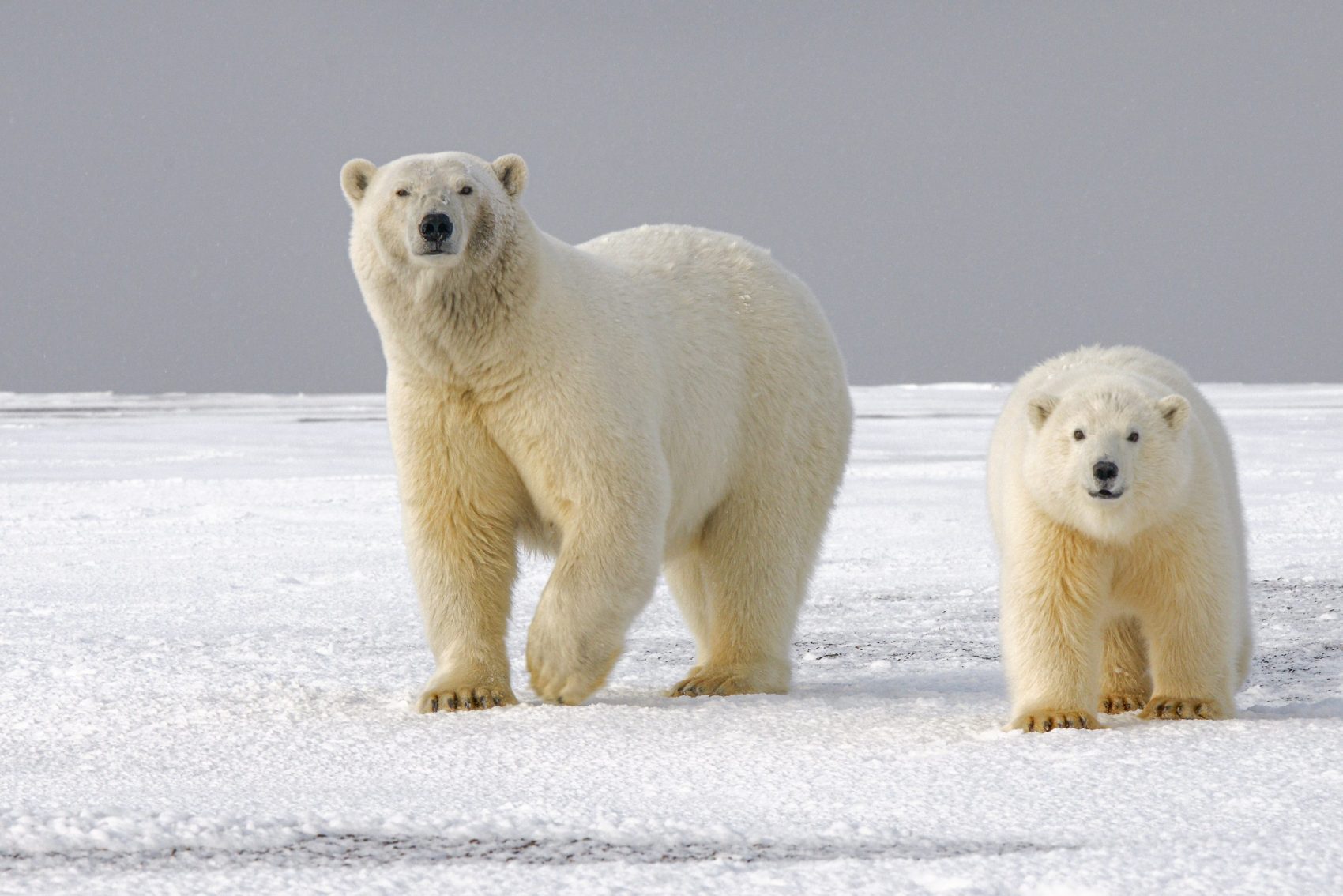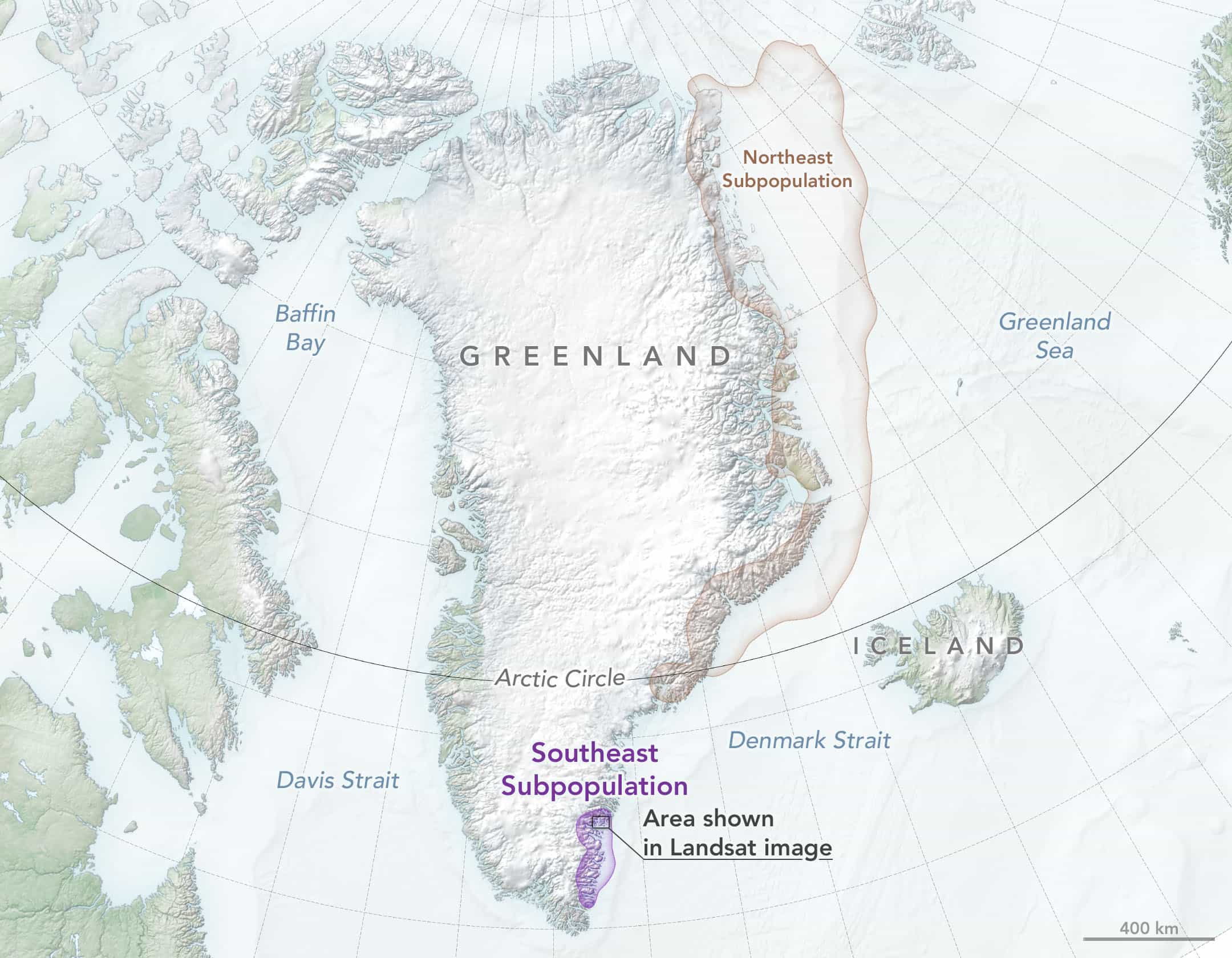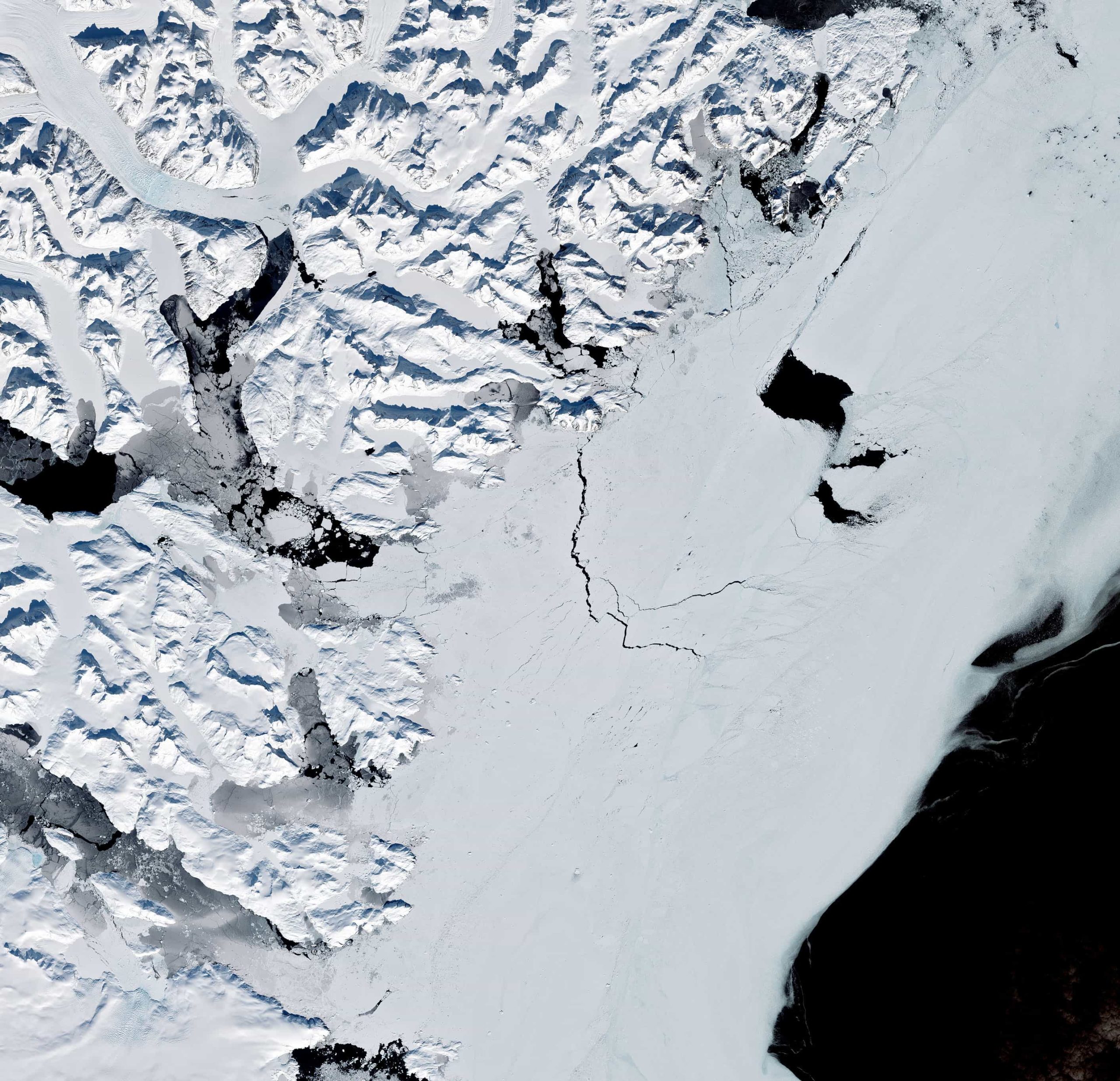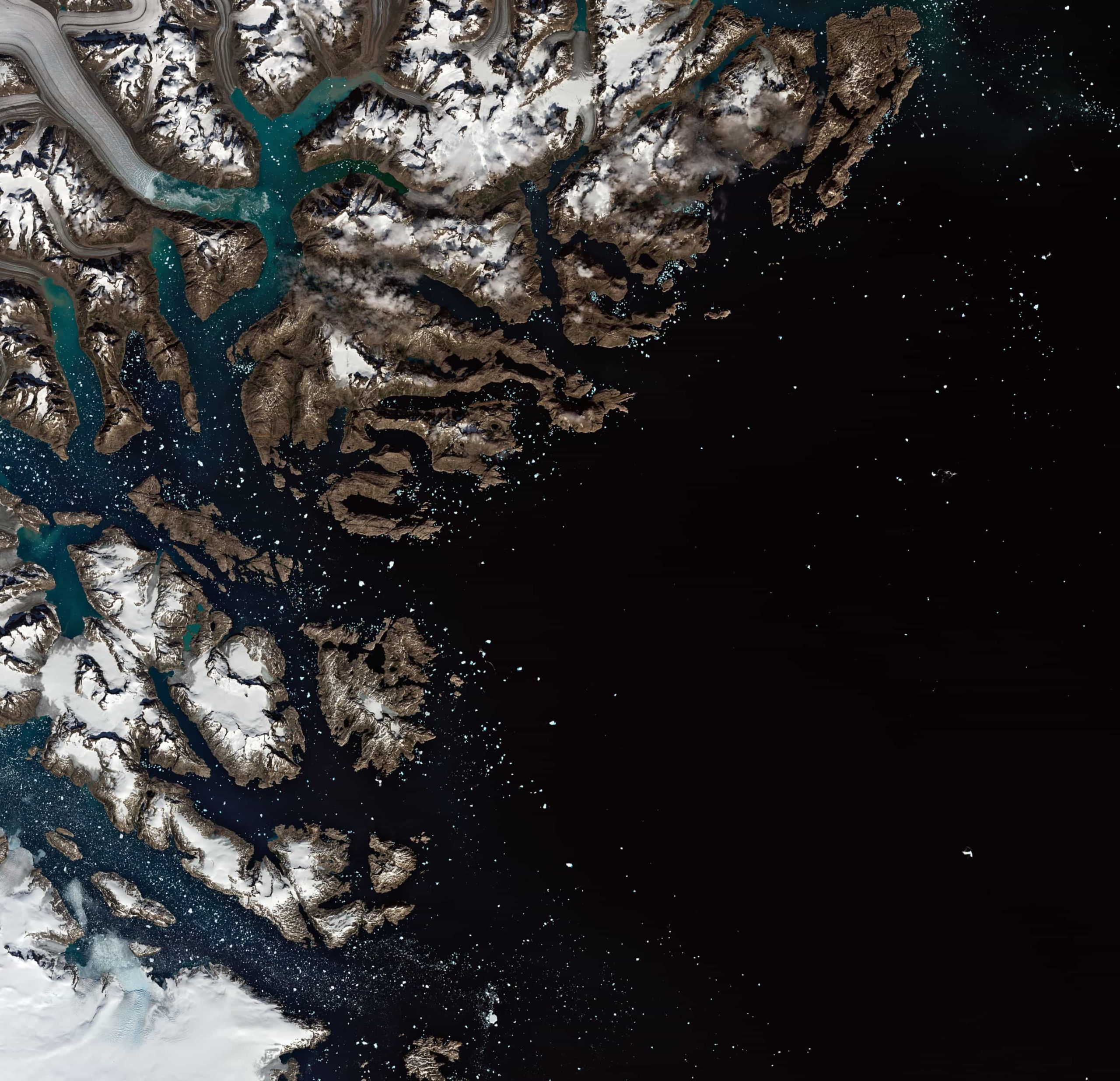
Scientists have discovered that glaciers in Southeast Greenland are harboring a previously unknown subpopulation of polar bears. The bears, which are uniquely adapted to their environment, could provide insight into the future of the species in a warming Arctic.
- Related: 9 Amazing Facts About Polar Bears
Most polar bears rely on Arctic sea ice as a platform for hunting seals, mating, and raising cubs. As the planet warms and sea ice declines, the bears are struggling to complete these essential life tasks. However, researchers using satellites and ground-based data sources found that polar bears in Southeast Greenland have adapted to life in a place where sea ice is scarce for much of the year.
Instead of traveling large distances to hunt on sea ice, polar bears in Southeast Greenland are homebodies. They live and hunt amid the region’s fjords, where glacial ice spills from land and flows into seawater. The unique population has been isolated from their counterparts in the High Arctic for long enough that they have become genetically distinct.
“We knew there were some bears in the area from historical records and Indigenous knowledge. We just didn’t know how special they were.”
– Kristin Laidre, a polar scientist at the University of Washington
Laidre and colleagues combined 36 years of movement, genetic, and demographic data to show that polar bears in Southeast Greenland are distinct from bears living elsewhere along the island’s eastern coast. Their findings were published June 17 in Science.
The map below, based on satellite telemetry data from 1993–2021, shows the habitat spanned by the Southeast Greenland subpopulation (purple) compared to that of the neighboring subpopulation in Northeast Greenland (orange). Polar bears in the southeastern subpopulation are found across 27,749 square kilometers (10,714 square miles) of mountainous and glaciated coastal habitat; bears in the northeast are found across 671,208 square kilometers (259,155 square miles) of mostly sea ice.

The team also used the Moderate Resolution Imaging Spectroradiometer on NASA’s Terra and Aqua satellites and data from the National Snow and Ice Data Center (NSIDC) to document the conditions in the fjords and the offshore sea ice environment. They found that southeastern polar bears are cut off from sea ice for two-thirds of the year. From late May until the sea ice returns in February, the bears hunt from atop the pieces of broken glacial ice floating at the front of glaciers—a mixture known as mélange.
“The marine-terminating glaciers in Southeast Greenland are a fairly unique environment. These types of glaciers exist in other places in the Arctic, but the combination of the fjord shapes, the high production of glacier ice, and the very big reservoir of ice that is available from the Greenland Ice Sheet is what currently provides a steady supply of glacier ice.”
– co-author and NSIDC scientist Twila Moon
One example is the Heimdal Glacier, pictured below. The glacier is part of the Timmiarmiut Fjord system and within the habitat of the Southeast Greenland subpopulation. In April 2022 (left), sea ice still hugged the front of Heimdal Glacier; in August 2021 (right), there was mostly mélange and open water. The images were acquired with the Operational Land Imager-2 (OLI-2) on Landsat 9, and the OLI on Landsat 8, respectively.


Southeast Greenland today resembles what researchers expect Northeast Greenland will look like in the late 21st century due to climate change. The way the southeastern polar bears have adapted could be an indication of how other polar bear populations may adapt to survive as global warming persists. But the authors caution that glacier ice cannot provide for many bears, and polar bear numbers will likely decrease regardless.
The study was funded in part by NASA’s Biological Diversity and Cryospheric Sciences programs, a collaboration that Moon said was important for supporting the team’s interdisciplinary research. She added: “We view these cross-collaborations as vital for addressing many pressing research challenges related to our rapidly changing world.”
This story first appeared on NASA Earth Observatory. NASA Earth Observatory images by Joshua Stevens, using data from Laidre, K. L., et al. (2022) and Landsat data from the U.S. Geological Survey. Story adapted for NASA Earth Observatory by Kathryn Hansen, based on materials from Hannah Hickey/University of Washington, and Jude Coleman/NASA’s Earth Science News Team.